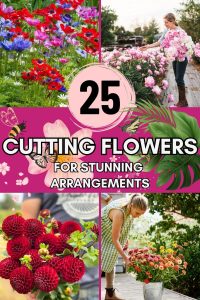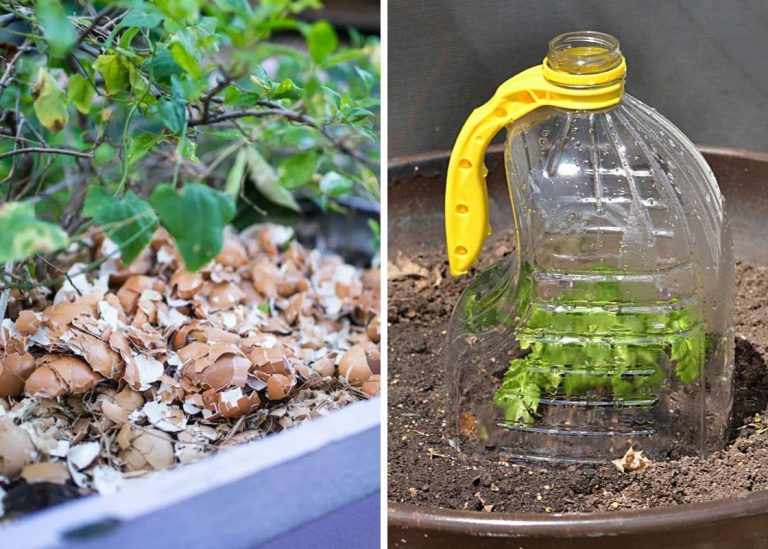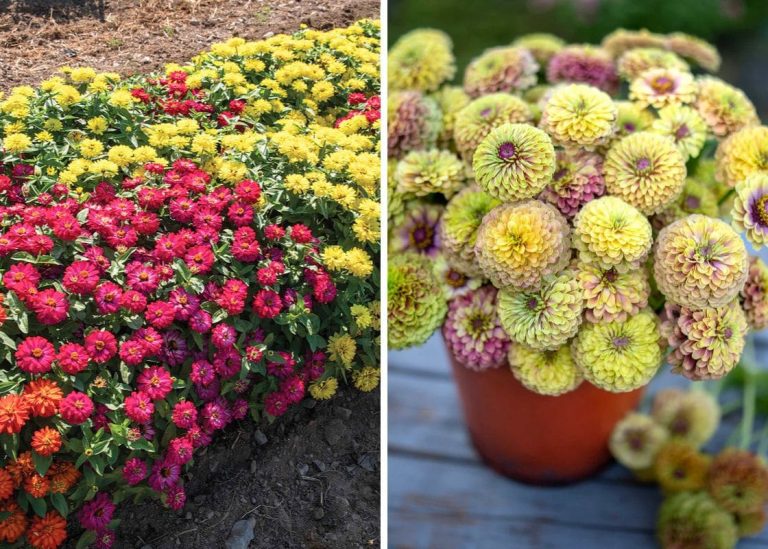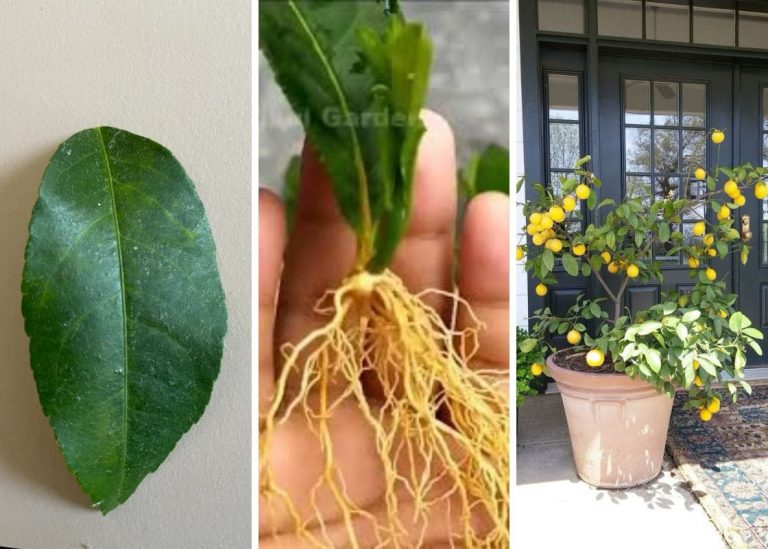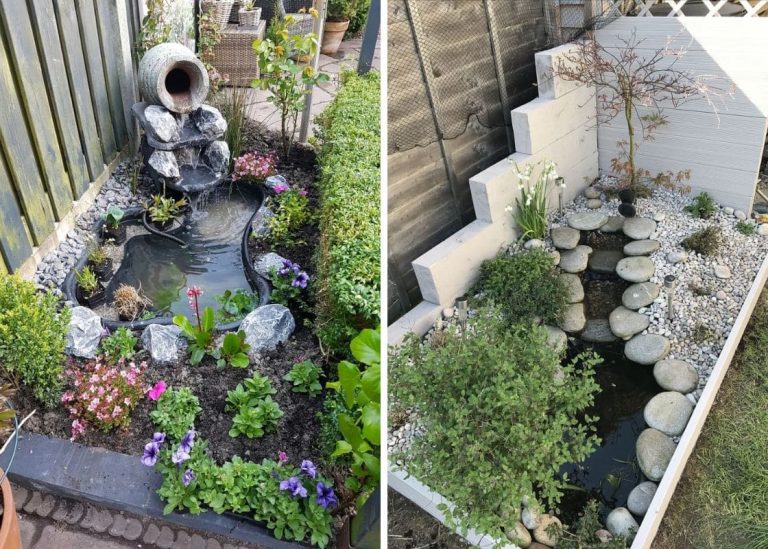25 Beautiful Cutting Garden Flowers for Stunning Arrangements
Some mornings, before the kettle finishes boiling, I often go outside in slippers, scissors in hand, gathering a handful of blooms. Not because I planned to, but because the garden simply asked me to. One soft pink zinnia, two glowing sunflowers, and a wild sprig of mint later—I’ve forgotten all about the tea. That’s what a cutting garden does. It pulls you in with its generosity and sends you back with something beautiful in your hands.
I didn’t grow up around floristry or formal gardens. What I had was a curious mind, an old pair of shears from my grandmother’s shed, and a small patch of soil beside the porch. I used to cut marigolds and wild cosmos just to brighten my windowsill. There was something magical in that act—a kind of alchemy, taking something living and letting it light up the inside of a home.
Over the years, I’ve learned which flowers not only look good in a vase but also last, bloom repeatedly, and bring joy both outside and in. My garden is far from perfect, but it’s full of stories, and each flower has earned its place.
If you’ve ever wished to fill your home with your own fresh bouquets, you’re in the right place. These 25 cutting garden flowers aren’t just pretty—they’re the ones I reach for again and again, season after season.
#1. Roses

Three old rose bushes by my gate came from a neighbor who couldn’t take them when she moved. Now they bloom with more fragrance and beauty than any store-bought bouquet.
Hybrid teas offer classic form, while David Austins fill a room with scent. I cut them early morning, at an angle, and they last beautifully.
#2. Peonies
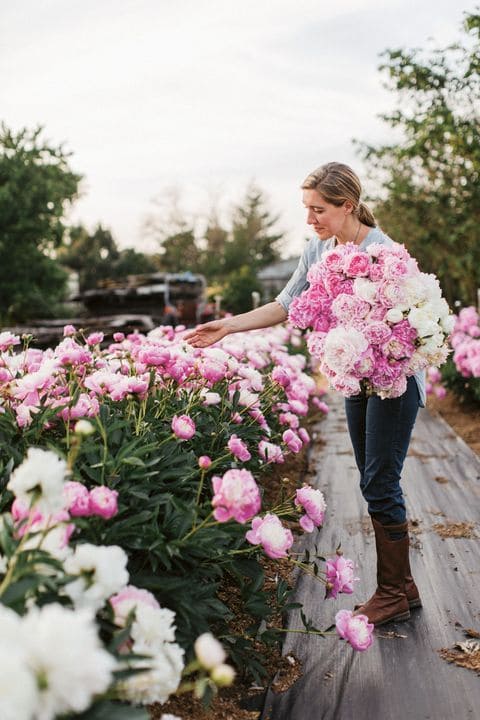
Every May, our peonies bloom in big, blousy clouds that make the whole garden feel like a wedding. I once snapped a photo of my niece barely visible behind one massive pink bloom.
They only flower for a few weeks, but they’re unforgettable. For best results, plant them in sun, give them rich soil, and never dig them up.
#3. Dahlias
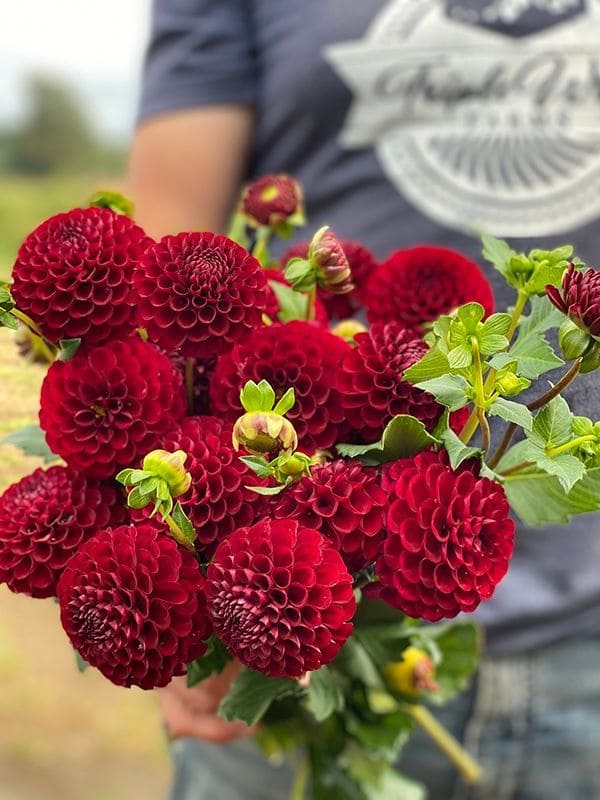
Dahlias are the drama queens of the garden—and I mean that in the best way. Last year, my “Café au Lait” plant produced blooms so large they practically needed two hands to carry. The color? A creamy blush that looked like antique porcelain.
They’re not hard to grow, but they do love attention. Good soil, regular feeding, and pinching off the first buds encourage fuller plants. I always cut them in the cool morning air; their stems snap clean, and the vase life is incredible if you sear the ends in hot water for a few seconds.
I grow them in rows behind the shed where they get morning sun and afternoon shade. Every stem feels like a little celebration when it goes into a bouquet.
#4. Zinnias
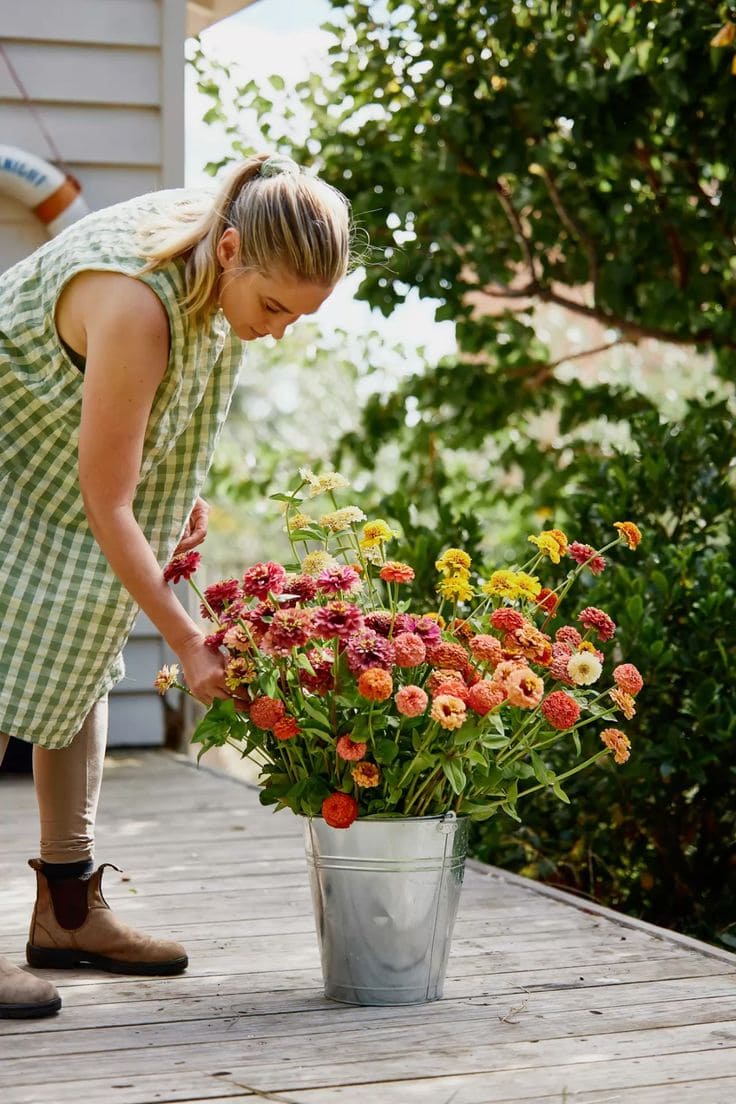
Zinnias were my very first “cutting flower” success. I planted them from a seed packet bought on a whim during a hardware store run. By midsummer, the patch looked like confetti exploded all over the yard.
They’re cheerful, forgiving, and wildly productive. If you cut regularly, they keep blooming until frost. My favorite variety is ‘Queen Lime Blush’—soft greens with hints of pink that look stunning next to bold colors like orange or purple.
They do best in full sun and slightly dry conditions. I learned that overwatering makes them floppy. Now I just let them thrive in the heat, snipping blooms every couple of days and dropping them into jars all over the house.
#5. Sunflowers

Sunflowers feel like a burst of joy—bold, tall, and glowing with that deep golden warmth that instantly brightens a room. I grow a mix of varieties, from the classic yellow giants to moody reds and pale lemon tones, each adding a unique character to my vases.
They’re quick to grow and give you sturdy stems that hold up in arrangements. I harvest them just before they fully open so they last longer indoors and don’t drop pollen too soon.
#6. Snapdragons
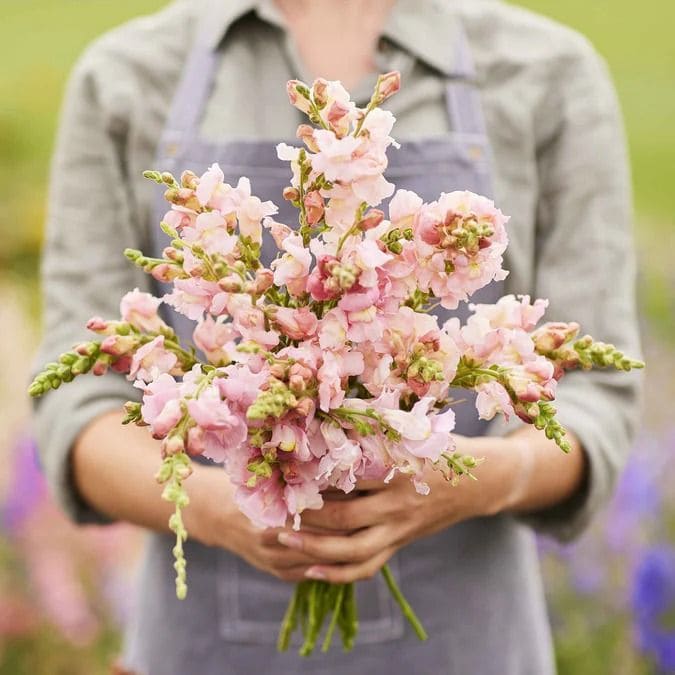
Snapdragons are the quiet stars of early spring and fall in my garden. Their spiky blooms add height and structure to bouquets, and the color range—from creamy whites to velvety purples—is just dreamy.
They thrive in cool weather, and I’ve had success growing them both in raised beds and tucked into containers. If you keep snipping the stems, they’ll reward you with more blooms before the heat gets too intense.
#7. Lisianthus
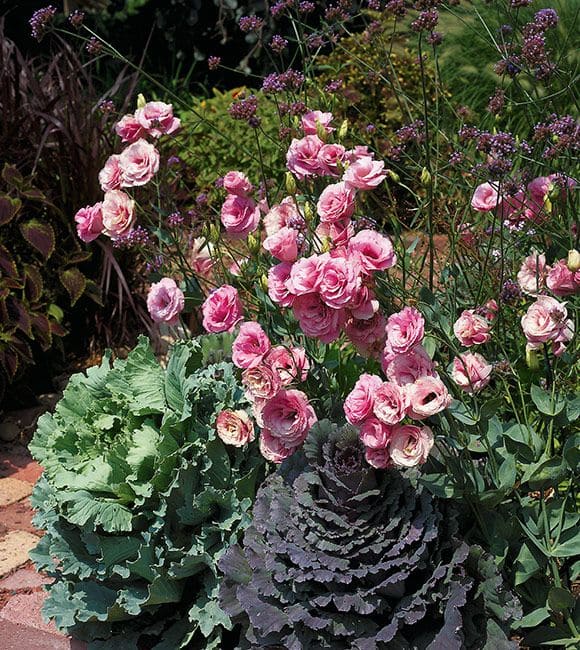
Lisianthus are elegance in flower form. I first saw them at a local flower show and mistook them for roses—soft, ruffled, and in pastel shades that made me stop and stare.
They take a bit more patience to grow from seed, but they’re worth every bit of effort. I love how long they last in a vase—sometimes up to two weeks without fading.
#8. Sweet Peas

Sweet peas climb with a delicate charm that instantly softens any garden space. Their scent is pure spring—light, floral, and comforting, like linens dried in the sun. I plant them along a small arch trellis near the back fence, and by April, it’s covered in pastel blooms.
They do best in cool weather, so I sow them early and pick often. Each bouquet I make with sweet peas brings a little romance indoors, and their slender stems pair beautifully with roses or wildflowers.
#9. Cosmos
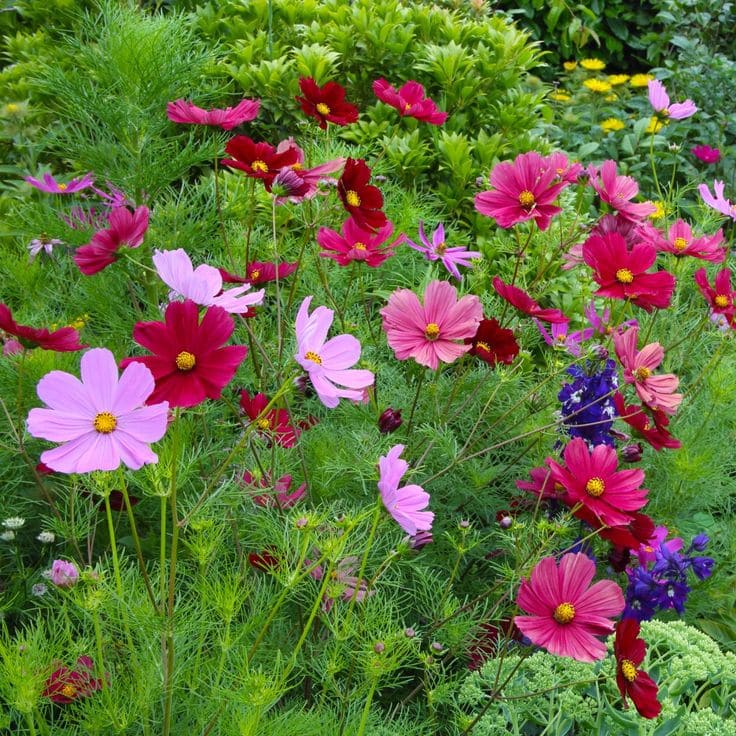
Cosmos bring a carefree spirit to the garden. Their feathery foliage and daisy-like flowers create the illusion of movement, even on still mornings. I toss seeds into my roughest garden corners and watch them flourish with barely any attention.
They bloom best in full sun and poor soil, oddly enough—too much pampering, and they sulk. I cut them often to encourage more blooms, and they fill my kitchen jars with color all summer long.
#10. Hydrangeas

Hydrangeas feel like pure garden luxury. The first time mine bloomed, I couldn’t stop running my hands over those oversized, cloud-like clusters. I planted them near the kitchen window so I could watch their color shift with the soil—sometimes pink, sometimes blue, sometimes a little moody purple that matched stormy skies.
They prefer morning light and rich, moist soil, and once they settle in, they become dependable showstoppers. I cut them with long stems and let them dry naturally in tall pitchers—they hold their shape like paper art. My favorite trick is tucking a small rock in the vase bottom to keep their hollow stems from curling too soon.
#11. Tulips

Every spring, tulips are the first to break winter’s silence in my garden. One chilly morning, I spotted a coral bloom pushing through frost—and it stopped me in my tracks. That quiet burst of color felt like the earth saying, “We made it.” Since then, I’ve planted them in clusters near the porch steps where I can enjoy their unfolding each day.
To extend bloom time, I mix early, mid, and late varieties. I harvest them when the buds are still tight and green-tinged at the base—they open slowly indoors, giving me a front-row seat to their transformation. Their stems keep growing in the vase, and I secretly love how they lean toward the window light like dancers stretching after a long sleep.
#12. Gladiolus
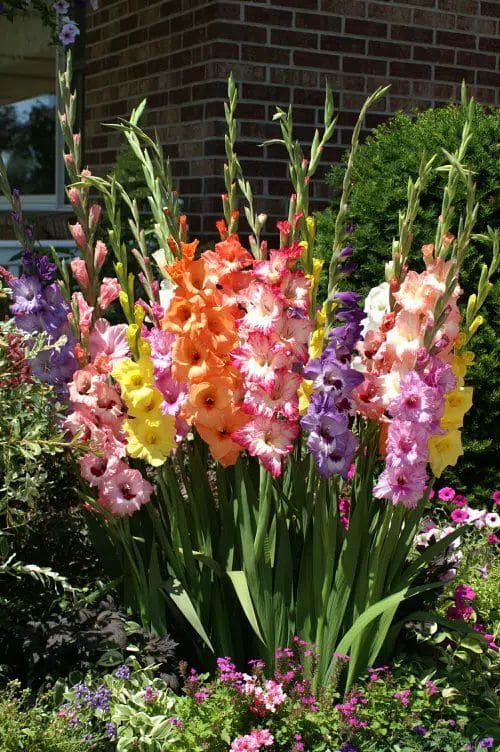
Gladiolus blooms remind me of fireworks frozen mid-burst. My aunt grew rows of them along her driveway in dazzling colors—neon pink, lemon yellow, deep violet. She’d cut a fresh bunch for the church every Sunday, and I always admired how gracefully they stood, like quiet sentinels of joy.
In my garden, I tuck the corms into deep, sandy soil and stake them once they get tall. The trick is to harvest when just the bottom blooms begin to open—too late, and the top ones won’t catch up. I love slipping them into tall, slender vases in the entryway where they bring instant drama.
#13. Black-Eyed Susans
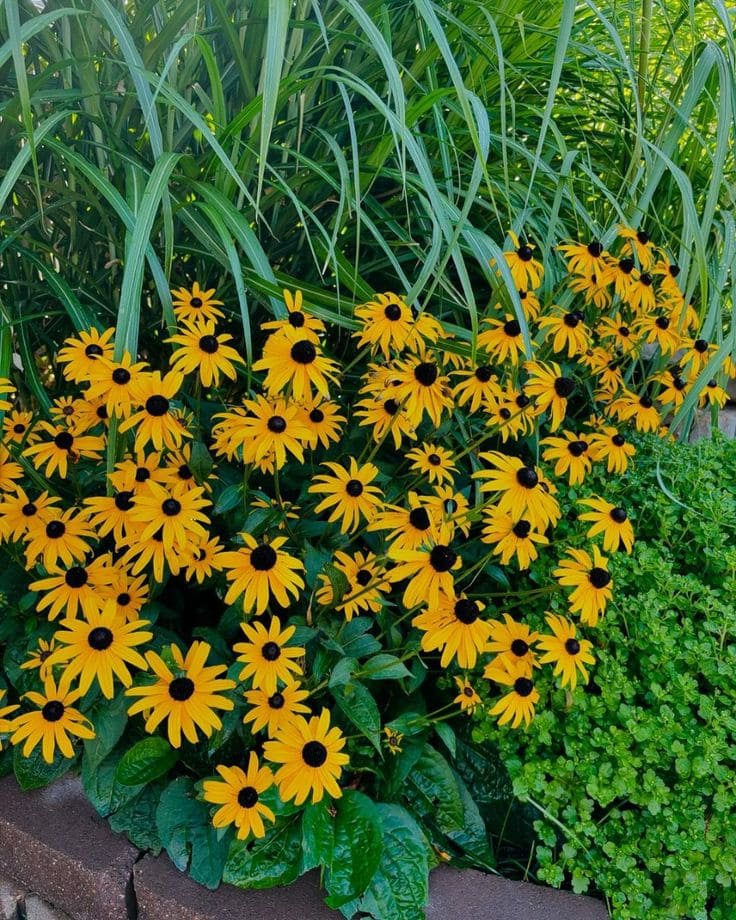
Black-eyed Susans bloom like little bursts of sunshine that never take themselves too seriously. I planted them along a fence one summer mostly out of curiosity, and now they return year after year like cheerful old friends. Their golden petals and dark centers add a rustic charm to any bouquet.
They thrive in dry soil and full sun, which means they rarely complain, even during dry spells. I love mixing them with wildflowers and herbs for informal kitchen arrangements that feel like countryside walks in a jar. They’re also my go-to for pollinator corners—bees can’t seem to resist them either.
#14. Lavender

One summer, I planted a border of lavender along the garden path, thinking mostly about color. But what I got was a whole atmosphere—honeybees humming, soft fragrance drifting through open windows, and long violet stems brushing my legs as I passed. That section of garden still feels like a sanctuary.
Lavender prefers dry, sandy soil and full sun. I harvest the stems in early bloom, hang bunches upside-down, and later use them in sachets tucked into drawers. But more than anything, I grow it for its calm. Just running your fingers through the foliage on a stressful day is enough to reset your heart a little.
#15. Stock
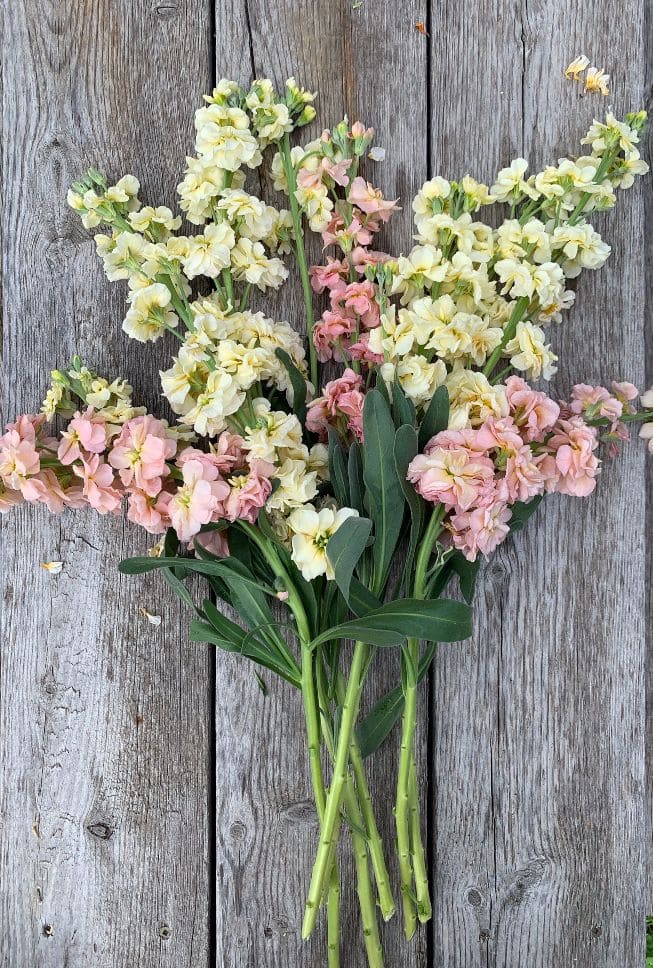
Stock surprised me the first year I grew it. I expected soft color, but what I didn’t expect was the scent—like clove and spice drifting through the garden in the early evening air.
It thrives in cooler weather, so I sow it early in spring. The blooms look delicate but last well in a vase, especially when paired with peonies or roses.
#16. Delphiniums
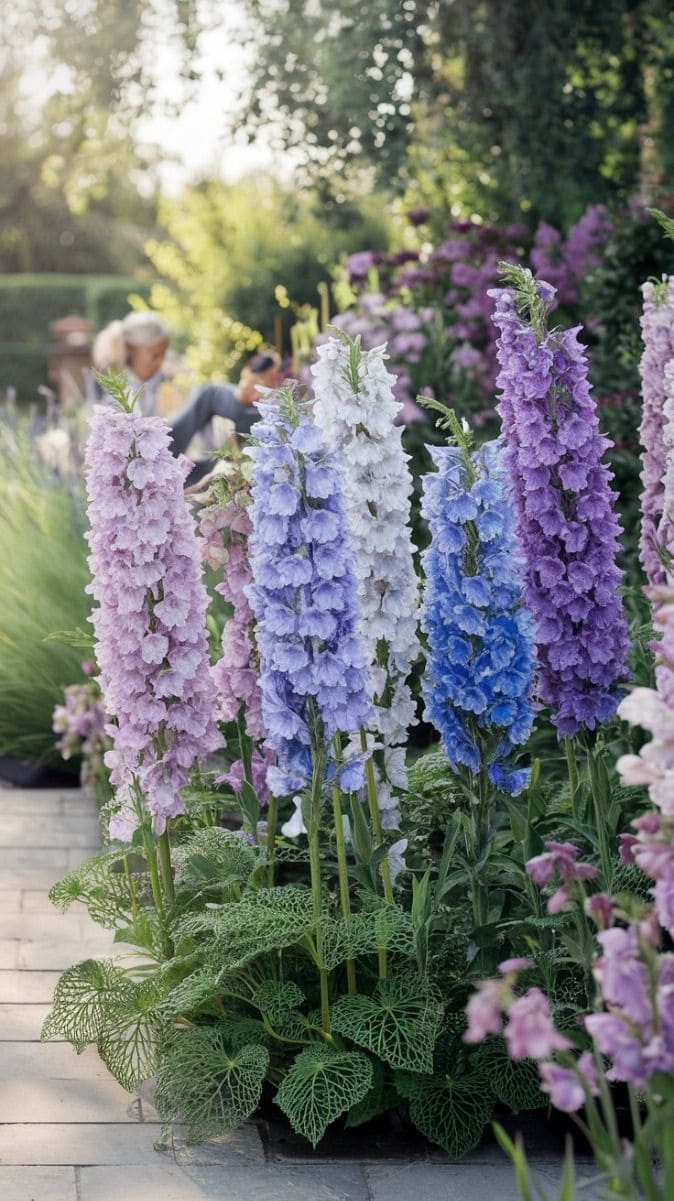
I once planted delphiniums along a white picket fence, hoping for that storybook garden feel. By midsummer, the blue spikes stood like tall candles in a sea of green, elegant and just a little wild.
They prefer rich soil, full sun, and a sheltered spot away from strong wind. I stake them early and cut stems when half the flowers have opened for the best vase life.
#17. Scabiosa
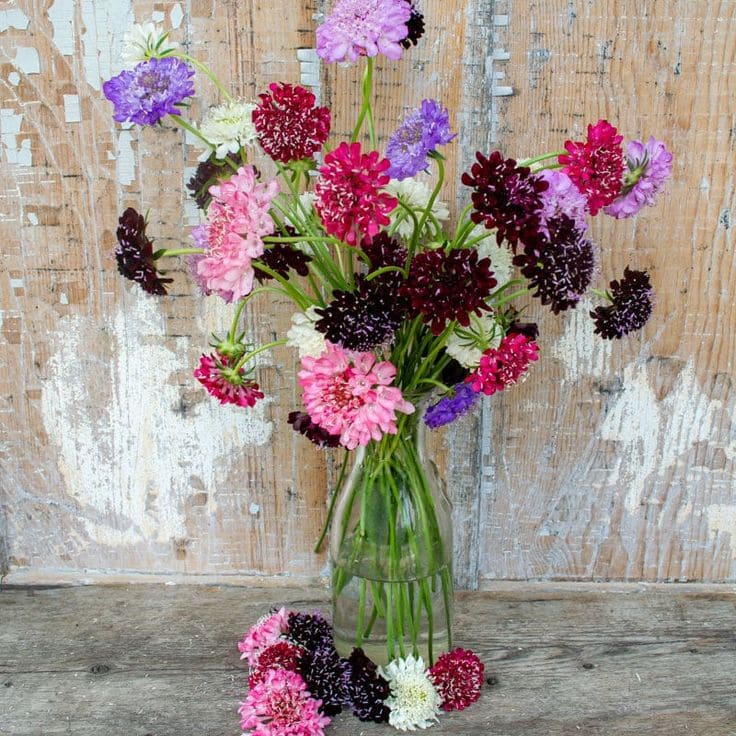
Scabiosa—also called pincushion flower—was a late addition to my garden but quickly became a favorite. Its lacy petals and dancing stems bring soft movement to any bouquet.
I sow it in full sun and keep cutting to encourage new blooms. It’s not just pretty—it attracts bees and butterflies and gives arrangements a playful, airy texture.
#18. Asters
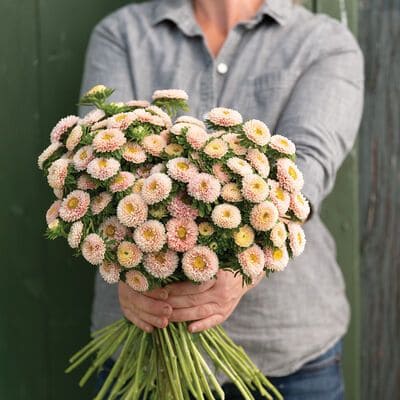
By the time most flowers start fading, asters come in strong with bold purples, pinks, and whites. I love how they bloom just when you think the garden is done giving.
They’re reliable and easy to grow, blooming well into fall. I often mix them with dahlias and herbs for rustic autumn bouquets that last long in the vase.
#19. Anemones
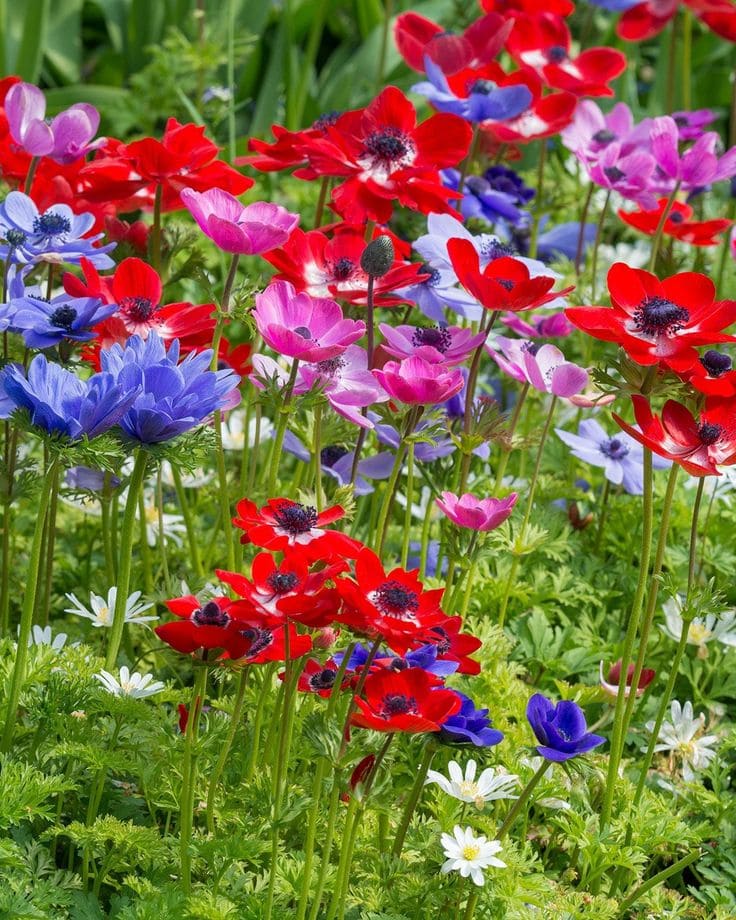
Anemones bring a hint of drama with their dark centers and silky petals. I grow them in the cooler months, and their early blooms feel like small treasures after a long winter.
They prefer loose soil and consistent moisture. Cut just as the buds start to open, they’ll hold beautifully indoors and lend that extra touch of intrigue to any arrangement.
#20. Veronica
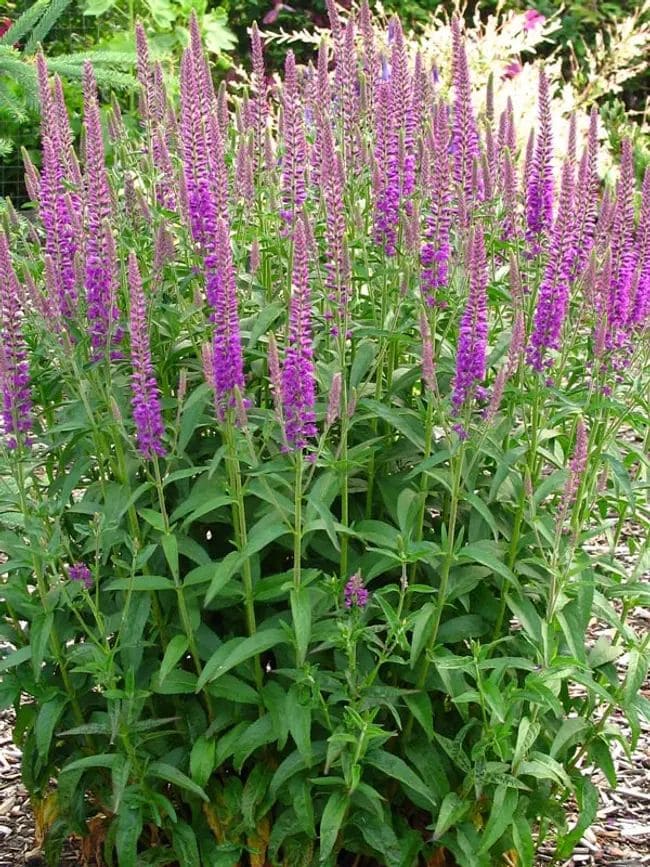
Veronica has become one of my favorite fillers for its slender spires and graceful way of weaving through arrangements. The bees in my garden love it just as much as I do.
It thrives in full sun and keeps blooming when regularly cut. I grow it near the herb beds where it adds vertical texture and soft purple hues that pair well with nearly everything.
#21. Celosia

Celosia looks like coral plucked from the sea—feathery, bold, and full of personality. I first planted it to experiment, and now I can’t imagine a summer garden without it.
It adores heat and keeps blooming even when other flowers start to fade. I cut it for both fresh and dried bouquets—the texture adds something completely unexpected.
#22. Bee Balm

Bee balm gives the garden both color and a soft citrus scent that’s hard to miss. I grow it near the back deck, where hummingbirds zoom by like little garden guardians.
Its bright, shaggy flowers fill gaps in summer arrangements and bring a bit of whimsy. I cut it early in the day when the color is freshest and the stems are firm.
#23. Carnations

Carnations remind me of school recitals and handmade corsages, but they’ve grown into something far more elegant in my cutting garden. Their ruffled petals and soft clove scent feel sweet and timeless.
I plant them in clusters for a full effect and cut just as the petals begin to unfurl. They last incredibly long in vases, often outliving every other bloom in the bunch.
#24. Yarrow
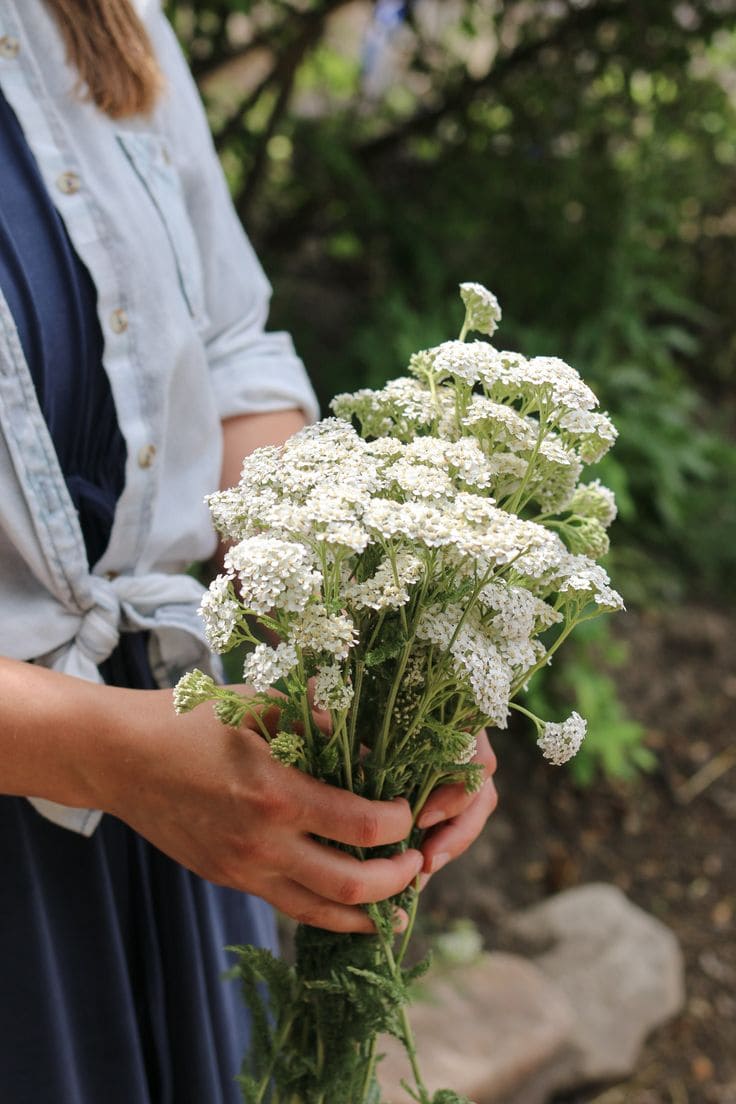
Yarrow may look delicate, but it’s tough as nails—growing in hot, dry corners where nothing else thrives. I love the way its flat-topped blooms fill out arrangements without ever feeling heavy.
I often mix yellow or white yarrow into summer bouquets for that gentle meadow-like vibe. Plus, the pollinators seem to hover around it all day.
#25. Larkspur

Larkspur is one of those flowers that quietly wins you over. I scatter seeds in late fall, and by early summer, the garden is filled with dreamy spikes of lavender, pink, and white.
It’s easy to grow, surprisingly generous, and always looks good in a tall vase. I cut stems early in the day and enjoy watching them open gradually indoors.
Final Thoughts
A cutting garden isn’t just about the flowers—it’s about what they give back to you daily. For me, it’s the ritual of stepping outside with a basket and returning with something alive, something lovely.
These flowers bring beauty into the home, but also into the rhythm of life. You don’t need a perfect garden or even a big space. Just a few willing plants, a pair of scissors, and a little curiosity can start something beautiful—right where you are.
